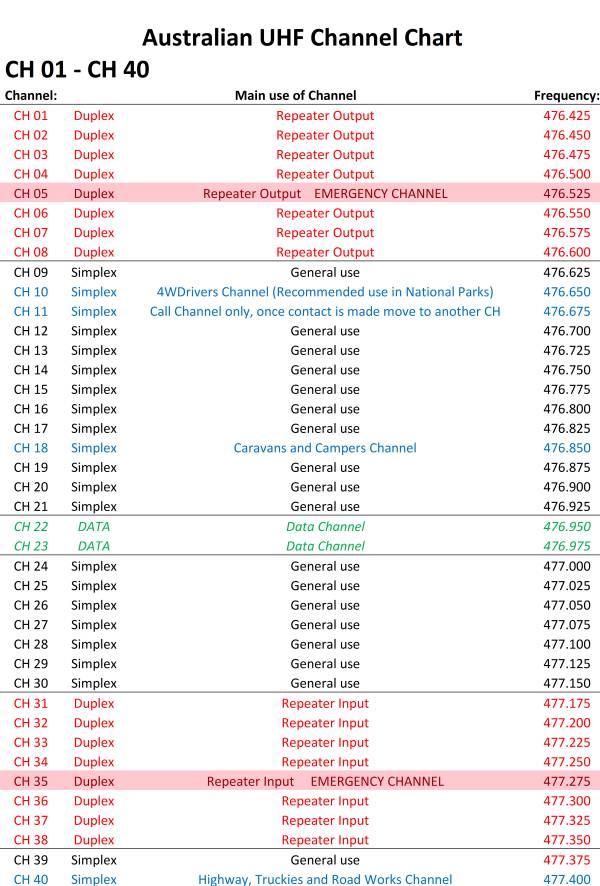
Ultra
High Frequency CB Radio or Two way radio:
Ultra High Frequency or in short UHF.
Without a shadow of a doubt the UHF CB radio is the best device for communicating off road in convoy.
There is no delay between communicating and if everyone is on the same channel the entire convoy no matter how big or small will be up to date on track conditions or where the next turn is etc. etc.
Range on the UHF CB radio is line of sight. If there is a hill in the way the signal will not travel past it using basic functions, more on range and other functions see UHF Antenna.
An Ultra High Frequency CB radio is mounted inside the 4x4 with the UHF antenna mounted on the bull bar, roof, bonnet or in some cases on the rear bar. The most common and easiest place to mount an UHF antenna is on the bull bar.
There is also a compact hand held version of the UHF/two way radio. These only
have very small range but are great for guiding another vehicle through a tough
section or track obstacles as yelling and pointing doesn't always work.
To communicate with a two-way radio is very simple, push to talk and release
the button to listen, this is also the reason an UHF CB radio is known as a
"two way radio". The only real problem that does occur is when people
are communicating at the same time or talking at the same time, when this
happens they can't hear each other as only one person can talk at any time.
For
this reason during vehicle recoveries it's essential that only the people
involved in the recovery are using the UHF CB radio in case someone talks over
someone else.
Newer and more channels:
Older Ultra High Frequency CB radios only have 40 channels, but as of May 2011 an additional 40 channels we're opened out for use.
In order to use these new channels (total of 80) a newer Ultra High Frequency CB radio is required.
Older and newer UHF radios are still able to communicate as long as both are using the original 40 channels.
Which channels to use on ultra high frequency:
Some national parks, caravan parks, recreational areas and other areas will have signs at entry areas stating which UHF channel to use for communicating purposes.
Pay attention to these as you enter as some areas they may be used for alerting other vehicles on blind one-way corners that you’re making a turn or maybe you’re climbing over a narrow sand dune, alerting possible oncoming traffic could save you from a lot of trouble.
Not all channels are for general public use and it would be wise to know which
can be used and which are not to be used. For example channel 5 & 35 is for
emergencies only, for a complete list of channels and their use see this LINK
for UHF CB radio channel list:
Recent Articles
-
Goodyear wrangler MTR
Jun 28, 24 10:27 PM
I have these on my defender 90 and my Dmax Ute. I get around 100,000 km out of them. I tried AT for one change and went back to the MTs. They are gol -
4x4 off road tracks 0 to 250 km from Perth
Nov 21, 23 07:40 PM
On this page we cover 4x4 off road tracks within a 250 km radius from Perth... -
4 Wheeling Around Jurien Bay.
Nov 21, 23 07:35 PM
Jurien Bay 4x4 tracks info and general information about the area...
- Home
- Off Road Communication
- Ultra High Frequency
Leave Ultra High Frequency And Go To 4 Wheeling In Western Australia.





